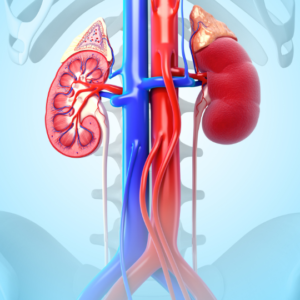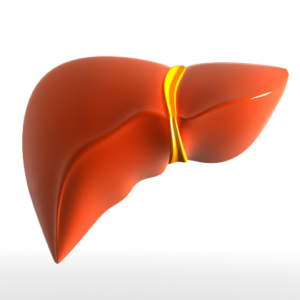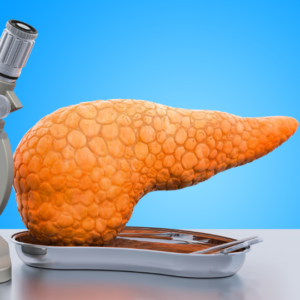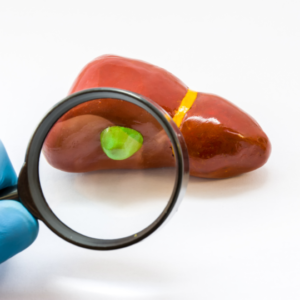So, you want to learn about some common organ pathologies and how they can impact our bodies, huh? Well, you’ve come to the right place. In this article, we’ll be focusing on four main organs: the kidneys, liver, pancreas, and the gallbladder. We’ll be discussing the physiological interactions among these organs, risk factors for developing pathologies, and how these pathologies can impact our metabolism and overall lifestyle. As a bonus, we’ll also cover primary and secondary bile acids, with their risks and benefits.
But first things first: let’s define some terms. When we talk about “pathologies,” we’re referring to diseases or disorders that can affect the functioning of an organ. These pathologies can range from acute (short-term) to chronic (long-term), and they can have a wide range of symptoms and effects on the body.
Now, let’s take a closer look at each of these four organs and how they can be affected by pathologies.
Kidneys
The kidneys are a pair of bean-shaped organs located in the lower back. Their main function is to filter waste and excess fluids from the blood and excrete them as urine. They also play a crucial role in regulating blood pressure and electrolyte balance.

Kidney infections, kidney stones, and chronic kidney disease (CKD) are a few of the main kidney diseases to be aware of. When too much calcium, oxalate, or other chemicals crystallise in the kidneys, kidney stones develop. Both the pain and the urine flow from these stones can be excruciating. Pyelonephritis, another name for kidney infections, is when bacteria enter the urinary tract and go on to the kidneys. Fever, back ache, and abdominal pain are symptoms. Contrarily, chronic kidney disease (CKD) is a chronic disorder in which the kidneys deteriorate and lose their ability to function. It may eventually proceed to renal failure and cause an accumulation of waste products in the body.
Risk factors for kidney pathologies include a family history of kidney disease, high blood pressure, diabetes, and obesity. Like with most conditions, some ways to mitigate these risk factors include maintaining a healthy weight, eating a balanced diet, and getting regular exercise.
Liver
The liver is the largest organ in the body and is located in the upper right abdomen. It performs a wide range of functions, including storing glycogen (a type of carbohydrate), producing bile, and detoxifying harmful substances.

There are several liver pathologies to be aware of, including hepatitis, cirrhosis, and liver cancer. Hepatitis is an inflammation of the liver that can be caused by a viral infection or other factors. Symptoms include fatigue, abdominal pain, and jaundice (yellowing of the skin and whites of the eyes). Cirrhosis is a condition in which scar tissue replaces healthy liver tissue, leading to reduced liver function. It can be caused by excessive alcohol consumption, viral hepatitis, or other factors. Liver cancer is a type of cancer that starts in the cells of the liver.
Risk factors for liver pathologies include excessive alcohol consumption, viral hepatitis, and certain medications. Some ways to mitigate these risk factors include avoiding excessive alcohol consumption, getting vaccinated against hepatitis, and being cautious about taking medications that could potentially harm the liver.
Pancreas
The pancreas is a gland located behind the stomach that produces enzymes to help digest food and hormones to help regulate blood sugar levels.

There are several pancreas pathologies to be aware of, including pancreatitis, pancreatic cancer, and diabetes.
Pancreatitis is an inflammation of the pancreas that can be acute (short-term) or chronic (long-term). Symptoms include abdominal pain, nausea, and vomiting. Pancreatic cancer is a type of cancer that starts in the cells of the pancreas. It is often diagnosed at an advanced stage, as it often does not cause symptoms until it has spread to other parts of the body. Diabetes is a condition in which the body is unable to properly use and store glucose. The pancreas plays a key role in the development of diabetes, as it produces the hormone insulin, which helps regulate blood sugar levels.
Risk factors for pancreas pathologies include smoking, a family history of pancreatic cancer, and a high-fat, high-sugar diet. Some ways to mitigate these risk factors include quitting smoking, maintaining a healthy diet, and getting regular exercise.
Gallbladder
Bile is a fluid produced by the liver that helps to digest fats and absorb fat-soluble vitamins. It is stored in the gallbladder and released into the small intestine when needed.

There are several bile pathologies to be aware of, including gallstones and bile duct cancer. Gallstones occur when bile hardens and forms stones in the gallbladder. They can cause abdominal pain, nausea, and vomiting. Bile duct cancer is a type of cancer that starts in the tubes (ducts) that carry bile from the liver to the small intestine.
Risk factors for bile pathologies include a high-fat diet, obesity, and a family history of gallstones. Again the regular recommendations would mitigate these risk factors: maintaining a healthy weight, eating a balanced diet, and getting regular exercise.
Primary and secondary bile acids
Bile acids are produced in the liver and are essential for the digestion and absorption of fats and fat-soluble vitamins. There are two types of bile acids: primary and secondary. Primary bile acids are produced from cholesterol and are the main bile acids found in the body. Secondary bile acids are produced from primary bile acids by bacteria in the intestine.
There are several potential risks and benefits associated with bile acids. For example, high levels of bile acids in the body have been linked to an increased risk of colon cancer. On the other hand, bile acids may also have some beneficial effects, such as reducing cholesterol levels and improving glucose tolerance. So you just need to balance these out, like all other functions of your body.
Now let’s talk about how
genetics
can play a role in organ pathology risk.
One key genetic factor to consider is single nucleotide polymorphisms, or SNPs. These are variations in a single nucleotide (a building block of DNA) that can have an impact on the function of a particular gene. Some SNPs have been linked to an increased risk of certain organ pathologies.
For example, one SNP that has been linked to an increased risk of kidney disease is the APOL1 gene. This gene plays a role in the immune system and has been associated with an increased risk of kidney disease in individuals with African ancestry. Another SNP that has been linked to liver disease is the PNPLA3 gene. This gene plays a role in the metabolism of fats and has been associated with an increased risk of nonalcoholic fatty liver disease.
The recipe

So, what can we do to address these genetic risk factors? One approach is to adopt certain behaviors that have been shown to have a positive impact on organ health. Some examples include:
- Light exposure: Getting plenty of natural sunlight or using a light therapy box can help regulate the body’s natural circadian rhythms and improve sleep quality, which can have a positive impact on organ health.
- Temperature: Exposure to cold temperatures (such as cold water immersion or cold air exposure) has been shown to have a number of health benefits, including reducing inflammation and improving insulin sensitivity.
- Movement: Regular physical activity has been shown to improve organ function and reduce the risk of certain pathologies.
- Breathing: Deep breathing techniques, such as those used in yoga or meditation, can help reduce stress and improve overall health.
- Stress reduction: Reducing stress through techniques such as mindfulness meditation or cognitive-behavioral therapy can help improve organ function and reduce the risk of certain pathologies.
In addition to these behavioral tools, nutrition and supplements can also play a role in addressing genetic risk factors for organ pathologies.
For example, certain foods have been shown to have a positive impact on organ health. These include:
- Leafy green vegetables: These are high in antioxidants and other nutrients that can help improve organ function.
- Berries: Also high in antioxidants, these have been shown to have a number of health benefits, including improving insulin sensitivity and reducing inflammation.
- Nuts: These are high in healthy fats and have been shown to also improve insulin sensitivity and reduce the risk of heart disease.

There are also a number of supplements that have been shown to have a positive impact on organ health. These include:
- Probiotics: These are live bacteria that can help improve gut health and have been shown to have a number of health benefits, including reducing inflammation and improving insulin sensitivity.
- Curcumin: This is a compound found in turmeric that has been shown to have anti-inflammatory and antioxidant effects.
- Fish oil: This is high in omega-3 fatty acids, which have been shown to have a number of health benefits, including reducing inflammation and improving heart health.
Complicated? It is! Biology functions as a system and you have to consider it as a whole whenever addressing any underlying issues. That’s why in our genetic and metabolic optimization, we start with the basics of inflammation and move gradually toward nutrient optimization and eventually pathology mitigation. Give us a shout if you feel ready to start your journey!












